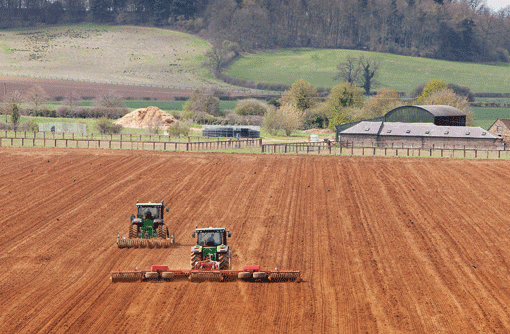CAP reform brings uncertainty for farm businesses

The restriction of payments to active farmers, the introduction of a maximum payment level and the allocation of payments to young farmers in the CAP reform proposals will prompt many businesses to look carefully at their current structure and operation.
There will now be extensive consultation and negotiation before these reforms are finalised. This will cause uncertainty in the land market, in letting land and for future business structures.
New Entitlements
The new regime will be based on a new allocation of entitlements, determined by the eligible agricultural area declared in the first year of the new scheme. However:
• Allocation of payment entitlements will only be made to farmers who activated at least one entitlement in 2011
• Recipients in 2014 must meet the definition of an active farmer (see below)
A clause in the draft regulation allows the transfer of the right to receive entitlements “to only one farmer” where a holding is sold or leased. This needs clarification and is likely to cause confusion in the land markets and in arrangements for land occupation in the period prior to the introduction of the new scheme.
Example
If, say, you are buying a farm today, are new to farming and want to farm it yourself or on a contract-farming agreement, you can proceed without difficulty for a couple of years. But in 2014, it will be necessary to find someone with the 2011 ‘qualification’ to allow you to establish entitlements under the new scheme. In practice this may be the person you bought it from, or anyone who was a SPS recipient in 2011. But this will have to be worked into the terms of deals where land is changing hands.
The new entitlements will be transferable but there is no reference to leasing. With the new allocation of entitlements, it seems that existing entitlements cease and will have no value.
Active Farmers
The current proposals state: “No direct payments shall be granted…where one of the following applies:
a) the annual amount of direct payments is less than 5% of the total receipts obtained from non-agricultural activities in the most recent fiscal year; or
b) the agricultural areas are mainly areas naturally kept in a state suitable for grazing or cultivation and they do not carry out on those areas the minimum activity established by member states in accordance with article 4(1)c”
Example
An individual with a 100ha farm receives, say, £27,500 in single payment before modulation. That person would need to have £500,000-£600,000 of other income to be disallowed direct payments under the new scheme. But it is not clear exactly what constitutes “receipts” and individual member states are to define “minimum activity”.
Capping
It is proposed the basic payment (but not the greening element) will be subject to progressive capping. The proposal is for a reduction in payments above €150,000 in progressive bands:
€0 to €150,000 – no reduction
€150,001 to €200,000 – 20% reduction
€200,001 to €250,000 – 40% reduction
€250,001 to €300,000 – 70% reduction
€300,000 and above – 100% reduction
The impact of this can be mitigated by allowing claimants to offset against the reduction the amount paid in “salaries including taxes and social contributions related to employment” in the previous year – again we need clarity on this.
Many farm businesses have developed by combining forces or restructuring to take advantages of economies of scale. Collectively these employ large numbers of staff, although the individual SPS recipient may not employ them directly.
This means some large farming businesses may suffer capping despite maintaining rural employment.
Example
How the labour offset mechanism may work for a 1,000ha farm employing staff and receiving a payment of €320,000 (£272,000) before modulation:
Total payment – €320,000
Less greening element – 30% (€96,000)
Less salaries (say) – €100,000
Net payment to be capped – €124,000
The deduction of the greening element, salaries and allowable associated expenses brings this farm’s SFP below the €150,000 threshold, hence it is not capped.
However, if the same business is run using contractors or as part of a joint-venture where the labour element is not directly employed by the claimant, there may be no opportunity to offset labour and associated costs and the scenario changes:
Total payment – €320,000
Less greening element – 30% (€ 96,000)
Net payment to be capped – €224,000
Reductions:
€150,001-€200,000 at 20% – €10,000
€200,00-€250,000 at 40% – €9,600
In this case, the reduction in SFP would be €19,600 (about £16,600, which is 4.3% of original total payment or about £16.60/ha on this farm)
This may not appear too onerous but the deductions increase quite rapidly above about 1,000ha.
Jonathan Armitage is head of farm management at Bidwells, Cambridge. jonathan.armitage@bidwells.co.uk
